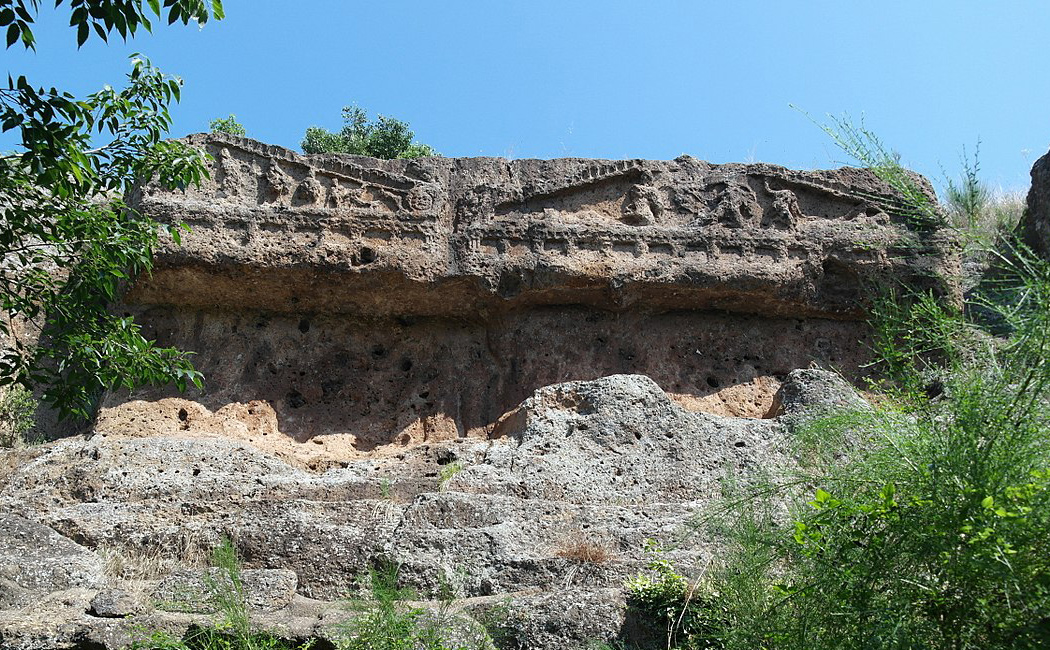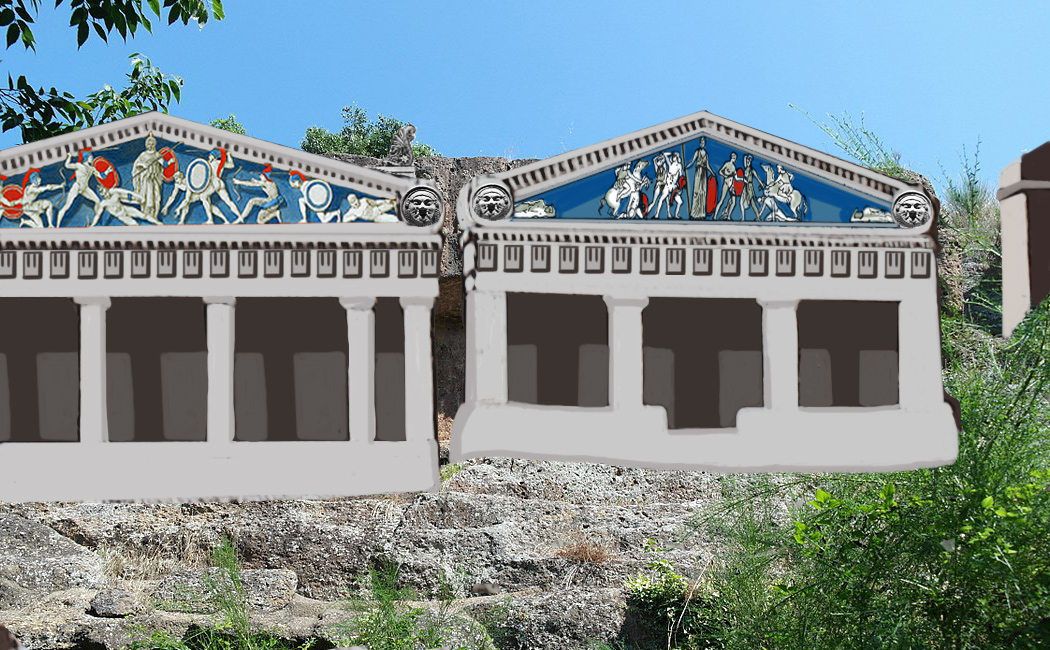SITES OF CULTURE
HISTORICAL EVENTS
Norchia
Like many other Etruscan cities, Norchia was built on a tufaceous plateau close by the Pile, Acqualta and Biedano streams. The southern edge of the plateau, which was not isolated from the nearby hills, was protected around the fourth century by a large moat and a wall of squared blocks of tuff.
A rolling passage, which cut the moat and wall perpendicularly, allows the access to the city. The developing of Norchia took place from the fourth century as were built various necropolises, arranged on the walls of the many overhangs that surrounded the city, with tombs carved into the tuff rock.
The most imposing tombs were of the semi-dado type, with a false carved building in the tuff bank, on whose front, under a frieze, there was a false architraved door. Under this door there was sometimes a small portico, supported by columns , which covered some banks and a further architraved door; on the sides there were one or two steps which led from the porch level to the terrace above. Norchia shows clear signs of Greek influence, evidenced by the rock tombs built from the IV to the II century, along the Acqualta stream.
These tombs show an accentuated monumentality with their sculpted front, according to the canons of the Doric temples, in imitation of which there were decorations carved with human figures and animals, originally stuccoed and painted.
With the fall of the Roman empire the rapid decline of Norchia began, until the Pope Hadrian IV, the only British to have become pope, in the XII century, built the castle and the church of San Pietro, of which remain the imposing ruins. But in 1435 a new war led to its destruction and Norchia was definitively abandoned and replaced by nearby Vetralla, which in a dominant and easily defensible position, has been occupied continuously since the early Middle Ages.
The territory was long disputed between the Popes and the lords of Viterbo, however it was assigned over the centuries to various noble families linked to the papacy: the Orsini, the prefects of Vico and successively to various cardinals.


